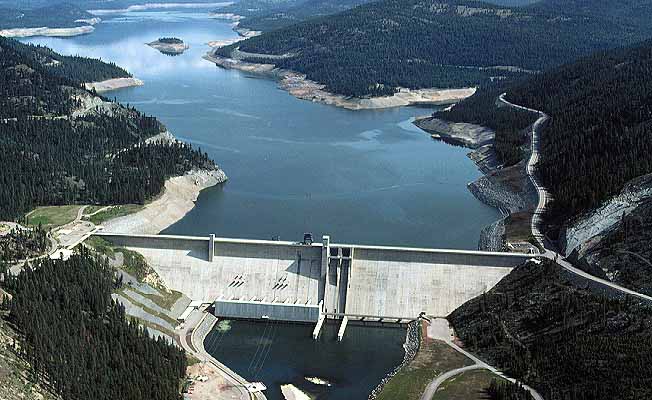(Acipenser transmontanus)
By Hunter Herrin
 |
| http://www.biologicaldiversity.org/assets/img/species/fish/KootenaiRiverWhiteSturgeon_ReneReyes_BureauOfReclamation_FPWC_PD.jpg |
As the largest freshwater fish in North America, the white sturgeon is a prehistoric giant that has been around for the past 70-million years. They live over 100 years in the wild and are unable to reproduce until they are at least 20 years of age. The biggest of its kind have been up to 18 feet long, and weighing in at over 1500 pounds. With their massive size, it would seem these “freshwater sharks” could be something from our nightmares, but that is far from the truth.
All members of the sturgeon family are bottom feeders, which has resulted in them evolving to the point of not having teeth, and instead having a vacuum like mouth they use to feed along the bottom of whatever river or lake they reside in. As you can see comparing the picture below to the one at the top of this post, their mouth is actually able to extended a ways out from their body to assist in feeding as well.
 |
| http://cdn.c.photoshelter.com/img-get/I00002D17O7cpNcU/s/880/880/MLU-20130612-034902-61US.jpg |
The original geographic range of the white sturgeon is along the Pacific side of North America, with sturgeon being found from the Aleutians Islands in Alaska all the way down to Baja California. The Kootenai River White Sturgeon is actually a subgroup of the population, as they are continuously landlocked. The majority of the species spend their adult lives in the brackish waters near river mouths, only entering further up the river in order to reach spawning locations.
 |
| http://bloximages.chicago2.vip.townnews.com/missoulian.com/content/tncms/assets/v3/editorial/1/51/15149936-7b00-11df-8dde- 001cc4c03286/4c1baeb76cffc.image.jpg |
 |
| https://upload.wikimedia.org/wikipedia/commons/9/97/Kootenay_River_Map.png |
The Kootenai River white sturgeon was isolated from the population of the Columbia River basin about 10,000 years ago in the last ice age, and since then has had no avenue out into the ocean. The range of this population can be seen on the highlighted section of the map to the right.
So Why Are These Fish Endangered?
In
1972 the construction of the Libby dam created Koocanusa Reservior, and in 1975
it began to fully regulate downstream flows of the Kootenai River.
Since then, the Kootenai River sturgeon population has been declining, and fast
at that. They Kootenai River Population has had a yearly mortality rate of
3-4%, yet has had almost no successful breeding since the implementation of the
dam. Although the Kootenai River White sturgeon still has that same native range to live in, the dam has interrupted the sturgeons breeding processes, effectively cutting them off from instinctual breeding grounds.
 |
| http://montana-surveytoolimages.s3-website-us-west-2.amazonaws.com/general/full-size/0196h.jpg |
The Recovery Plan
Due to this circumstance, the Kootenai River White Sturgeon was placed on the Endangered Species list on September 6th, 1994. It had a recovery plan drafted on September 30th, 1999, which had a main goal of reestablishing spawning grounds for the sturgeon. They are considered endangered and at high risk of extinction unless breeding population can begin to revitalize the once large sturgeon population.
Since the start of the recovery plan there has been significant feedback, as sturgeon numbers have started to rebound. The release of white sturgeon hatch lings into the Kootenai River Basin has had a large hand in this however, as spawning and breeding have not yet restored to a complete level. This will forever been the main threat to the species and unless this problem is solved, they may never recover completely.
Another threat to the population is lack of genetic diversity, but the introduction of the hatch-lings from other white sturgeon populations will hopefully resolve any issues that would result due to interbreeding.
What Can We Do?
Unfortunately, the sturgeon lives in such extreme area that it is difficult to have a heavy hand in their recovery. Outside of setting areas of the Kootenai River basin aside as protected lands or the release of juvenile sturgeon, there is almost no way for people to directly help this prehistoric fish. My best advice if you wanted to help protect the Kootenai River white sturgeon is to continue to support wildlife conservation of any kind, as the health of an overall ecosystem can always be a benefit to the animals living within it.
Work Cited
Why would the exterpation of this one, small sub population be so detrimental? Are there other species and ecosystem functions that rely on this group of stergeon, or are we trying to save it just to save it?
ReplyDeleteGood articles, Have you heard of Mr Benjamin, Email: lfdsloans@outlook.com --WhatsApp Contact:+1-9893943740-- who work with funding service they grant me loan of $95,000.00 to launch my business and I have been paying them annually for two years now and I still have 2 years left although I enjoy working with them because they are genuine Loan lender who can give you any kind of loan.
ReplyDelete